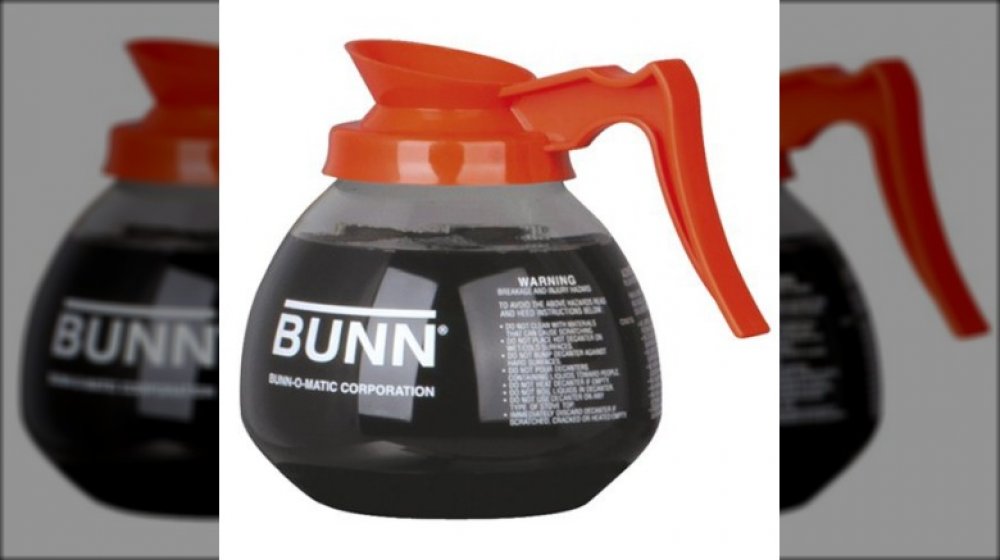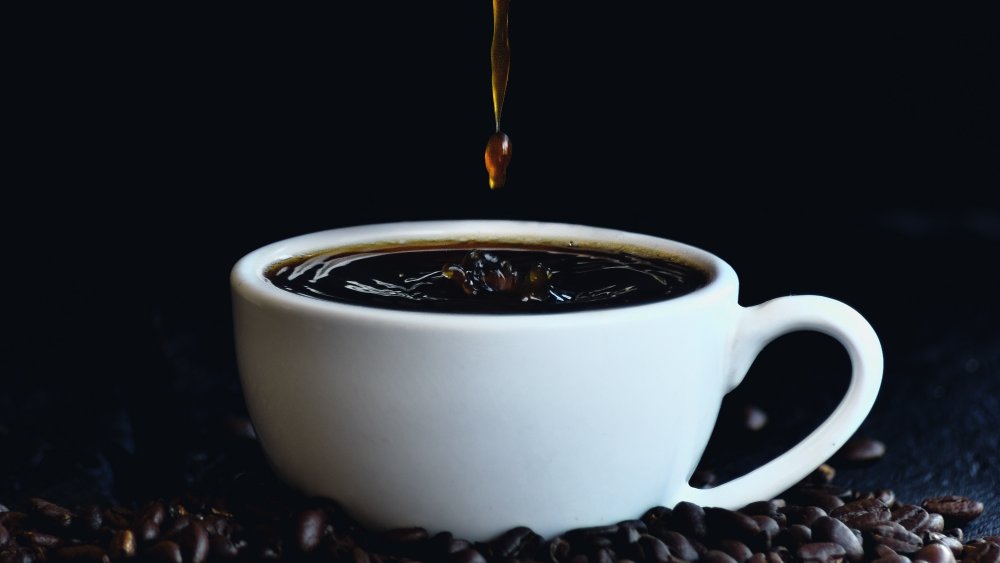The Real Reason Decaf Coffee Pots Are Orange
At diners and breakfast joints across the country, there are typically two coffee pots on the burner (sometimes three, when there's a pot with hot water for tea). Most folks in the crowd would be able to pinpoint which pot houses decaf coffee, and which pot is for regular coffee in a millisecond — because there tends to be a dead giveaway. Decaf coffee almost always is poured from a pot with a plastic orange ring around the top, as well as an orange handle. This color-coding helps to avoid mixups and pouring the wrong type of coffee into the wrong cup.
But where did this now seemingly-ubiquitous tradition come from? In addition to orange being a color that catches the eye, it also has to do with the history of how the first iteration of decaf coffee that came to grocery store shelves in the United States was marketed.
The history behind the orange
The German coffeemaker Sanka was the first producer to introduce decaffeinated coffee to the United States (via Caffeine Vibe). According to Fortune, when they began American distribution in 1923, Sanka marked the glass jars with orange labels (via Mental Floss). Unfortunately, this logic seems to no longer be applied by brands in grocery stores — too often "decaf" is printed on the package in minuscule letters unnoticed by the buyer until they get home with a pound of coffee they didn't want.
In 1932, General Foods — which has since merged with Kraft — bought the company, and began shipping orange coffee pots to restaurants to help market the brand. Soon, people associated decaf coffee with orange, thanks to both the orange-colored jars in grocery stores, and the orange-colored pots in restaurants. Once other coffeemakers began introducing decaffeinated brands, they also used orange.
Sanka is still around today, and though it may not have the same name-brand recognition that it once did, there's no denying that it played a part in the development of decaf coffee culture in this country.

